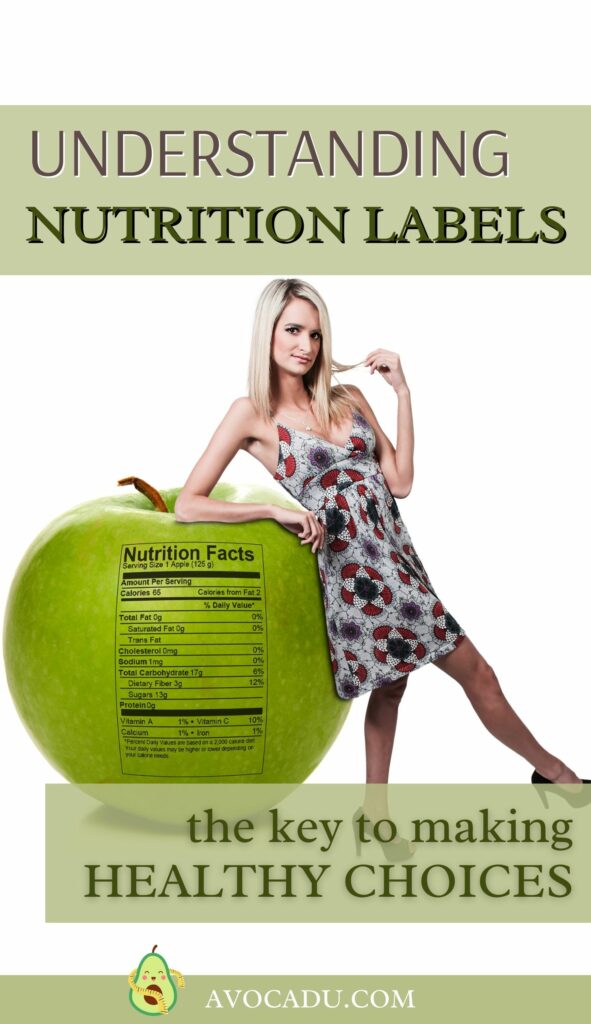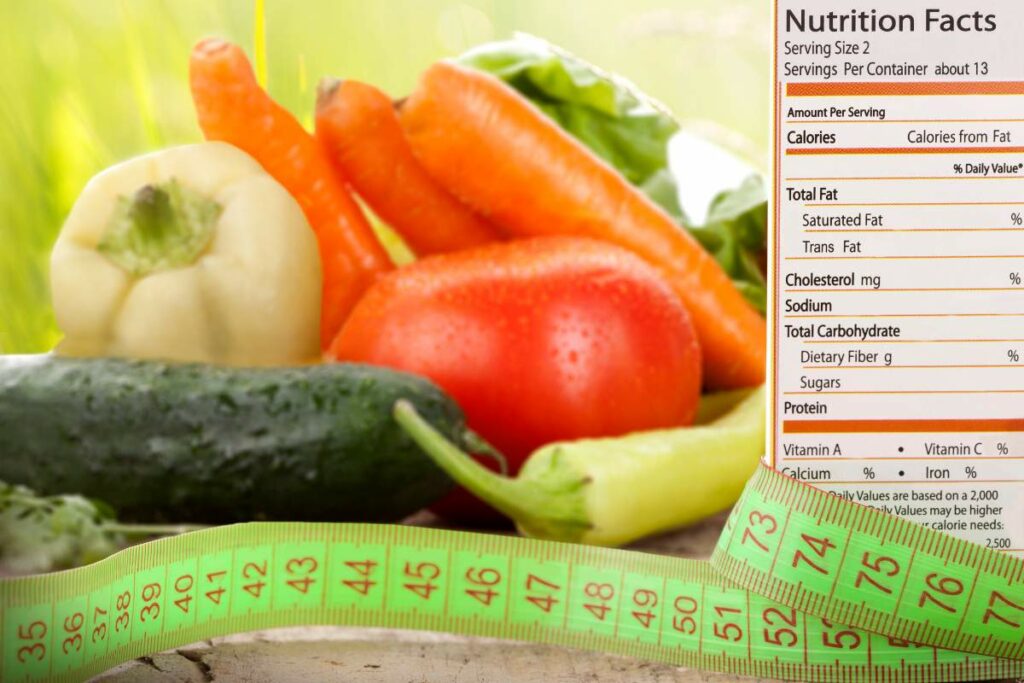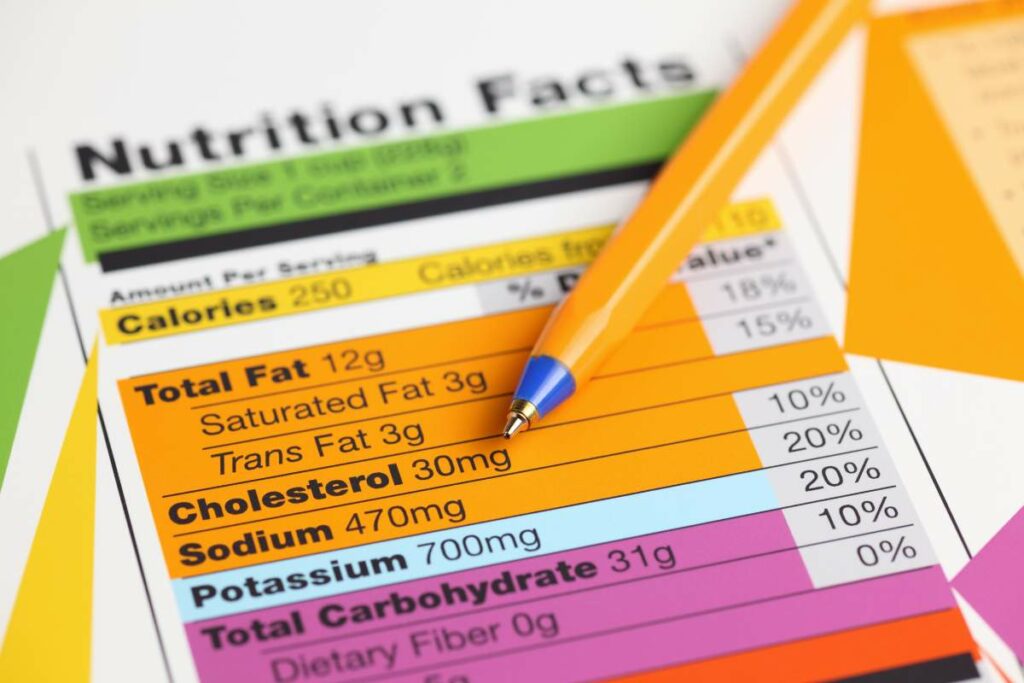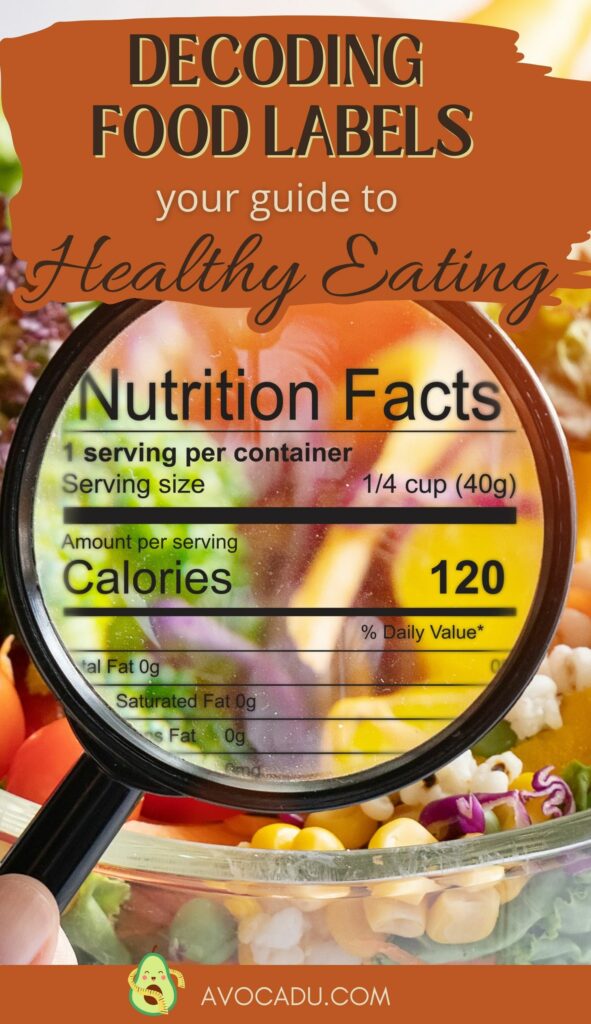Understanding Nutritional Labels: A Key to Making Healthy Choices
Hello, health-conscious foodies!
Ever stood in a grocery aisle, staring at the back of a food package, and wondered what on Earth those nutritional labels are trying to tell you? You’re not alone.
Nutritional labels can seem like a foreign language if you don’t know how to interpret them. But no worries, because we’re here to help!
They’re actually quite simple once you get the hang of it. Today, we’re going to decode the mysterious language and gain an understanding nutritional labels and transform you into savvy food detectives.

This post may contain affiliate links, which helps keep this content free. Please read our disclosure for more info.
The Basics of Nutritional Labels
Nutritional labels are like friendly guides that have been navigating us towards healthier food choices since the early 1990s. They act like a dietary compass, nudging us in the right direction as we journey through the vast world of food choices.
Each label is divided into four main parts, each providing vital information about the food you’re about to consume: Serving Size, Calories, Nutrient Information, and % Daily Value.
1. Serving Size
When it comes to nutritional labels, everything starts with the Serving Size. This is a standard measure that reflects the amount of food typically consumed at one time.
You might be surprised to find that the bag of chips you planned on polishing off during your favorite show actually contains two or three servings.
This matters because all the values given in the nutritional label are based on this specific serving size. So, if you eat double the serving size, you’ll be getting double the calories and nutrients listed.

2. Calories
The Calories section shows how much energy you get from one serving of the product. Remember, calories aren’t inherently bad. After all, our bodies need energy to function!
But when we consume more calories than we burn, it can lead to weight gain. That’s where understanding ’empty calories’ comes in handy.
These are calories that provide a lot of energy but little to no nutritional value, often coming from added sugars and unhealthy fats. Even if a food has a low calorie count, it might still be loaded with empty calories.
3. Nutrient Information
The Nutrient Information section is your product’s nutritional report card. It details how much of specific nutrients – like fat, cholesterol, sodium, carbs, protein, vitamins, and minerals – are present in one serving of the food.
The nutrients listed first are ones most people generally consume enough of, or even too much ofm so it’s beneficial to limit intake of those.
The nutrients listed at the end of the label (like dietary fiber, vitamin D, calcium, iron, and potassium) are ones that many people don’t get enough of, so, it’s a good idea to choose foods higher in these nutrients.

4. % Daily Value
Last, but certainly not least, the % Daily Value offers a quick snapshot of the nutrient profile of the food.
This percentage is calculated based on the daily recommendations for a 2,000-calorie diet, which is considered average for a moderately active adult.
However, it’s important to remember that individual caloric needs can vary significantly depending on several factors, including age, sex, height, weight, and physical activity level.
For instance, a sedentary woman over 50 often requires fewer calories (around 1,600 per day) to maintain a healthy weight, while a highly active young man might need considerably more (possibly over 3,000).
Also, for those looking to lose weight, a calorie deficit – consuming fewer calories than the body uses – is typically necessary. This means that many people aiming to maintain or lose weight will need to consume less than the 2,000-calorie standard often mentioned on food labels.
A general rule of thumb is that 5% or less of a nutrient is considered low, while 20% or more is considered high. So, if you’re trying to eat less of a certain nutrient (like added sugars), you’d want to aim for foods with a lower % Daily Value.
On the flip side, if you’re trying to consume more of a nutrient (like fiber), look for foods with a higher % Daily Value.
Understanding the basics of nutritional labels is like learning a new language. It might seem a bit overwhelming at first, but with a little practice, it’ll become second nature.
Once you master this language, you’ll be well-equipped to make healthier food choices and navigate the grocery store aisles with confidence!
Interpreting Nutritional Labels

Unlocking the secret of nutritional labels doesn’t require a PhD in food science, trust me! It’s all about understanding what to look for and how it relates to your health and dietary needs. Let’s go step by step:
1. % Daily Value
To reiterate what we said above, when you’re in the grocery store comparing similar food products, use the % Daily Value as a tool for quick reference. This tells you the percentage of a nutrient that a serving of the food contributes to a daily diet.
To be a savvy food detective, aim for foods that are high (20% or more) in the nutrients you want more of, like fiber, vitamins, and minerals.
On the other hand, strive to pick foods that are low (5% or less) in the nutrients you’re trying to limit, such as sodium, unhealthy fats (like trans and saturated fats), and added sugars.
2. Nutrient Listings
Take a look at the specific nutrient listings on the label, too. If you’re watching your carb intake, check out the ‘Total Carbohydrates’ section, which also lists dietary fiber and total sugars. If heart health is your priority, focus on ‘Saturated Fat’, ‘Trans Fat’, and ‘Cholesterol’.
3. Health Claims
Health claims on food packages are not just marketing strategies. They’re regulated by the Food and Drug Administration (FDA) and can provide valuable insights into a food’s health benefits. For example, a food product claiming to be ‘low sodium‘ should contain 140 milligrams of sodium or less per serving.

It’s important to read these health claims with a critical eye. A product may be labeled as ‘fat-free’ but could be high in sugars, or a ‘zero cholesterol’ food might still be high in unhealthy fats.
While health claims are useful, they should never replace a thorough review of the nutritional label.
Interpreting nutritional labels is like piecing together a puzzle. Each component – from serving size and calories to nutrients and % Daily Value – provides a piece of the health puzzle.
By considering all these pieces, you can build a complete and accurate picture of the food you’re consuming. That’s the real key to making informed, health-conscious decisions in the grocery aisle!
Making Healthy Choices with Nutritional Labels

Nutritional labels are your secret weapon for healthier eating. They can guide you to select nutrient-dense foods (those high in nutrients and low in calories) and help you limit your intake of certain nutrients like fats, cholesterol, and sodium.
1. Selecting Nutrient-Dense Foods
Nutritional labels are your cheat sheet to identify nutrient-dense foods – those that pack a lot of vitamins, minerals, complex carbohydrates, lean protein, and healthy fats into fewer calories.
An avocado, for example, might be high in fat and therefore higher in calories, but it’s also loaded with fiber, vitamin K, and healthy monounsaturated fats, making it a nutrient-dense food. A glance at the % Daily Value can help you gauge how nutrient-dense a food is.
2. Limiting Certain Nutrients
If you’re on a mission to lower your intake of specific nutrients like fats, cholesterol, sodium, or added sugars, nutritional labels are your best friends.
These labels provide clear information about the quantity of these nutrients in each serving, helping you make informed choices and track your daily intake.
3. Balancing Your Diet
In addition to helping you choose nutrient-dense foods and limit certain nutrients, nutritional labels also assist in maintaining a balanced diet.
They can help you ensure you’re getting enough of the good stuff (fiber, vitamins, minerals, etc.) while also keeping in check the things you need in moderation (like sodium, unhealthy fats, and added sugars).
4. Catering to Special Dietary Needs

If you’re on a special diet, such as a low-carb diet, a low-sodium diet for blood pressure management, or a high-fiber diet for digestive health, nutritional labels can guide your food selections.
They provide detailed information on the nutrient content of foods, allowing you to pick and choose what aligns with your dietary requirements.
5. Understanding Caloric Intake
Nutritional labels also shed light on your caloric intake. If you’re trying to lose, gain, or maintain weight, it’s crucial to know how many calories you’re consuming.
The ‘Calories’ section of the label provides this information based on a single serving size.
Case Study: Applying Knowledge of Nutritional Labels
To illustrate how understanding nutritional labels can lead to healthier food choices, let’s compare two hypothetical breakfast cereals – ‘Cereal A’ and ‘Cereal B’.

1. Calories
Upon first glance, ‘Cereal A’ might seem like the healthier choice because it has fewer calories per serving compared to ‘Cereal B’. However, simply focusing on calories can lead you to miss out on the bigger picture.
While managing calorie intake is important, particularly if you’re trying to lose weight, it doesn’t provide the full story of a food’s nutritional value.
2. Nutrient Content
Upon closer inspection of the nutritional labels, you might notice that ‘Cereal B’, despite its higher calorie content, has less added sugars and a higher fiber content than ‘Cereal A’.
High fiber content is beneficial for digestive health, can help control blood sugar, and promotes a feeling of fullness which may aid in weight management.
Lower added sugar is also a plus as excessive intake of added sugars can contribute to weight gain, tooth decay, and increased risk of heart disease.
3. % Daily Value
If you compare the % Daily Value, you might find that ‘Cereal B’ offers more of your daily fiber needs and contributes less to your daily sugar limit, even though it’s higher in calories.
4. Making the Right Choice
Considering all these factors, ‘Cereal B’ could be the healthier choice despite its higher calorie count. It provides more nutritional benefits (higher fiber, lower added sugars), which makes it more nutrient-dense than ‘Cereal A’.
This case study exemplifies why it’s important to consider the entire nutrient profile of a food, not just one component like calories.
While calories do matter, focusing too much on them can cause you to overlook other important nutrients. Balancing calorie intake with nutrient intake is the key to making healthier food choices.
By understanding and applying this knowledge of nutritional labels, you can become an empowered consumer, capable of making healthier food choices that align with your dietary needs and health goals.
The next time you’re comparing food products in the grocery aisle, take a moment to analyze the nutritional labels. You might be surprised at what you discover!
Stepping Towards Health: Nutritional Labels and Beyond

Wrapping things up, understanding and effectively utilizing nutritional labels is a significant stride towards a healthier lifestyle. They’re more than just informational decorations on packaging – they’re essential tools that can guide your nutritional decisions.
When you’re navigating the grocery store aisles, don’t forget to flip over those packaged items, delve into the labels, and let this newfound knowledge guide you towards healthier choices.
However, while nutritional labels are key for making informed decisions about packaged foods, the surest way to maintain a nutrient-dense, healthy diet is by focusing on whole foods instead of heavily processed ones.
Whole foods – like fruits, vegetables, whole grains, lean proteins, and healthy fats – are generally more nutrient-dense and less calorie-dense than processed foods. They’re packed with essential nutrients and devoid of added sugars, unhealthy fats, and artificial additives.
Incorporating a variety of these whole foods into your meals not only ensures a balanced intake of essential nutrients but also helps you manage your weight and promotes overall health.
For those looking for a structured way to kickstart their weight loss journey and instill healthy eating habits, consider the 21-Day Fat Loss Challenge program.

It’s an ultimate program designed for women aiming to lose weight rapidly yet healthily. You can expect to lose 10-21 pounds in just 21 days!
This program emphasizes eating a diet abundant in whole foods and provides guidance and support to help you make sustainable changes that lead to lasting weight loss.
The journey to better health isn’t a sprint, it’s a marathon. Every small step, like understanding nutritional labels or adding more whole foods to your plate, moves you closer to your goals.

